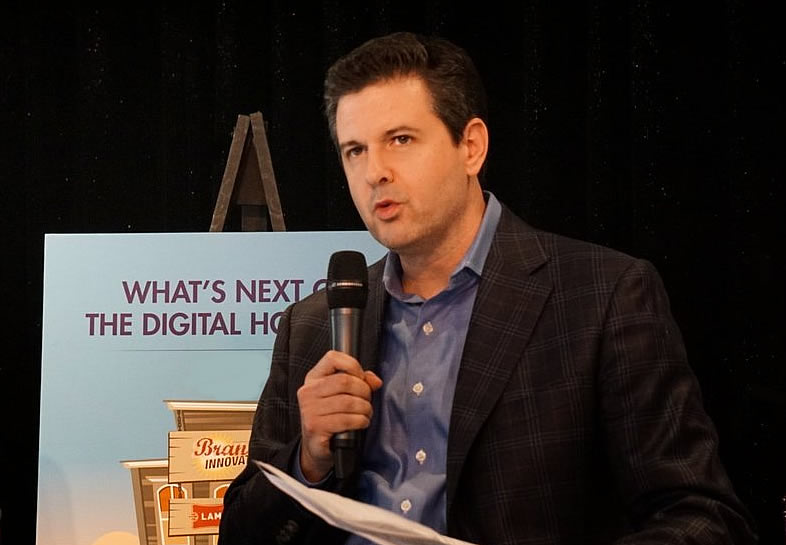In a world where the digital landscape is rapidly transforming how we approach business-to-business marketing, it’s hard to know what to prioritize first. We recently had the chance to sit down with an expert in the B2B space, Murray Goldstein, Executive Director of Marketing and Sales Operations for Cox Business, to find out what he’s seeing both today and looking forward into the future.
Goldstein has an extensive small to midsize business marketing background spanning digital and internet marketing, B2B strategy as well as brand messaging, naming and positioning. In this interview, he digs into the inbound and outbound balance marketers need to achieve, the power of employee advocacy and ambassadors-at-large, and where he thinks we’re headed as we develop and test new tactics and channels via the digital space.
What Lies Ahead for B2B Marketers
CoxBlue: What would you say are the critical changes in B2B marketers should pay attention to right now?
Murray Goldstein: There’s a balance of outbound and inbound marketing tactics B2B marketers are trying to employ. It’s not a perfect science, but the bottom line is you need to have both sets working in tandem.
From an outbound standpoint, we’re talking about traditional marketing and advertising channels: TV, radio, print, emails, etc. The challenge of traditional outbound marketing is that it’s highly saturated. People are bombarded with all sorts of tactics and messages on a daily basis, and it’s hard to cut through the clutter.
B2B marketers are looking to balance this strategy with more inbound marketing, meaning attracting more relevant potential customers based on where they are in their buying journey. Instead of jumping up and down and saying, “Notice me. Here we are. Look at us,” the paradigm has shifted where the marketer must create content to help address the challenges and unmet needs of the potential buyers themselves to let them “take it” from there.
The traditional way of looking at the buyer’s journey funnel isn’t nearly as relevant. It looked like a martini glass. The old way: Cast as wide a net as possible, whether it was with mail or with marketing and advertising tactics themselves, and, hopefully, find people at the proverbial “top of the funnel.” Then you would allow them to wander their way from the wide area of that martini glass towards the center, down through the stem, and into the base where you would catch them—wide at the top and narrow at the bottom.
Instead of a martini, it’s more like a cocktail shaker today. Potential buyers have a narrow selection when they’re doing the initial research before they even pop up on your radar. As they learn and understand more about their unmet needs and the potential vendors and partners that can help them, the process expands their original solution provider set towards a wider assortment of options.
B2B inbound marketing is about making it even more narrow. You’re allowing the customer the power to self-select and determine who they want to pursue and who they want to have the opportunity to engage within a personalized way. The funnel starts narrow, gets wider during the research phase, and then gets narrow again.

The Challenge of Focusing Your Marketing Efforts
CoxBlue: With so many new and different digital tactics available to B2B marketers, how do you determine where to focus?
Murray Goldstein: According to Ascend2, in a survey conducted in December 2017, 93 percent of firms expected to increase their spend on digital marketing in 2018. It was split among 43 percent working for B2B, 35 percent for B2C, and 22 percent for hybrid firms.
The reality is that all of us are looking to shift our budget to become more digital-first and digital-centric. Our challenge though, as a group, is determining which specific tactics to leverage and to what degree. If you ask this question of several people, you’re going to get a mix of responses.
The simple answer? There is no silver bullet. What keeps me up at night is the fear I’m smearing the peanut butter too thin. What I mean by that is that I know I need to invest in social media marketing and/or content marketing, but I also know that if I’m not spending the right attributable levels across search engine optimization, search engine marketing, email marketing, etc. the line gets blurred very quickly.
No matter what I do, I’m almost going to be leaving tactics as orphans, even though if someone were to ask me, “Where are you spending your dollars?,” I would say we’re diversifying the portfolio. We’re working hard not to be overly committed to one tactic in particular.
I don’t want to spend money on social media at the expense of email, or at the expense of SEO or SEM, but I’m doing that today. I’m spending money on content, and I’m spending money on social, but sometimes it feels like I’m not putting enough behind it—across paid, earned, and owned—to allow our efforts to take flight.
What Employee Advocacy Does That Traditional Marketing Cannot
CoxBlue: What role do your employee advocates or ambassadors play in amplifying the brand message and engaging current and prospective customers?
Murray Goldstein: Trying to create a highly engaged set of employees to serve as advocates on a day-in and day-out basis is essential. There is a very, very vital link knowing your employees advocate for your company in the digital space as well as the real one.
Whether it’s about the specific information they know as a subject matter expert working day-to-day for your company, or in sharing via social, blogging about it, or even potentially referring new employees themselves, it’s powerful to get your employees out there and engaged. In their everyday life, talking to friends, talking to family, talking to colleagues, I see an untapped potential to extend the core components of whatever your corporate marketing program might be.
You can find pockets of opportunity for employee advocacy if your culture can accommodate it. It can be pretty compelling and, frankly, even more powerful than any of the corporate marketing itself. Employee advocacy can reverberate by empowering your employees to shepherd the brand in ways outside traditional marketing tactics.
CoxBlue: How would you describe the importance of employee advocates and influencers to B2B Marketers in general?
Murray Goldstein: The stats vary from B2B to B2C, but in general, B2B marketers do not feel their lead generation programs are nearly as effective as they want them to be. B2B marketers are trying to figure out how to talk differently and think differently about getting their message across.
According to IDC, 75 percent of B2B buyers and 84 percent of C-level and VP-level executives use social media to make purchasing decisions. The tools that B2B buyers are using in their consumer, residential, everyday lives are influencing the decisions they make on behalf of their business, or on behalf of the role they fulfill in their given business. That means getting your employees to be active, engaged, and enthusiastic representatives of your brand on social media is key to being in the buying journey mix.
Connecting Across Verticals as a B2B Marketer
CoxBlue: Your organization focuses on a diverse group of verticals, with a variety of needs. How do you connect with such a diverse audience and make each of them feel they are important and that your brand understands their specific needs?
Murray Goldstein: Yes, we’re marketing to a wide variety of verticals. The best answer I can offer is that we’re mindful of speaking to people in a language that resonates with their industry, but not necessarily using tactics in one vertical differently than we’re using them in another. What we’re doing instead is personalizing the content to resonate and speak to these audiences, knowing that B2B buyers of our services are still just…people.
We’re going to serve up relevant content, relevant opportunities to engage with a potential customer or the existing customer base we have. Then, hopefully, we refine and hone that marketing mix over time as we learn which tactics are best at connecting with each vertical audience.
It’s also very easy to get entranced by the new digital tactic du jour. I see that quite often in what I’m reading and researching. But if we’re really being smart about it, it’s not so much about finding the next digital tactic to pursue; rather, staying centered to bolster and differentiate the value proposition we already have. We’re constantly trying to consistently improve our understanding of what our customers still value and need.
Then we come back to designing and executing the right tactics upon them, as opposed to chasing the next tactic and doing everything the other way around. Consumers are simply overwhelmed today. They’re going to see right through your smokescreen if you’re trying to be cute without ensuring the core message is spot-on in the first place.
- 5 Ways to Protect Your Business from AI Cybersecurity Threats - September 26, 2025
- 7 AI Best Practices for Creating an AI-First Tech Stack - September 11, 2025
- AI Agents In Retail and The Tech Upgrades Your Business Needs Now - August 21, 2025


